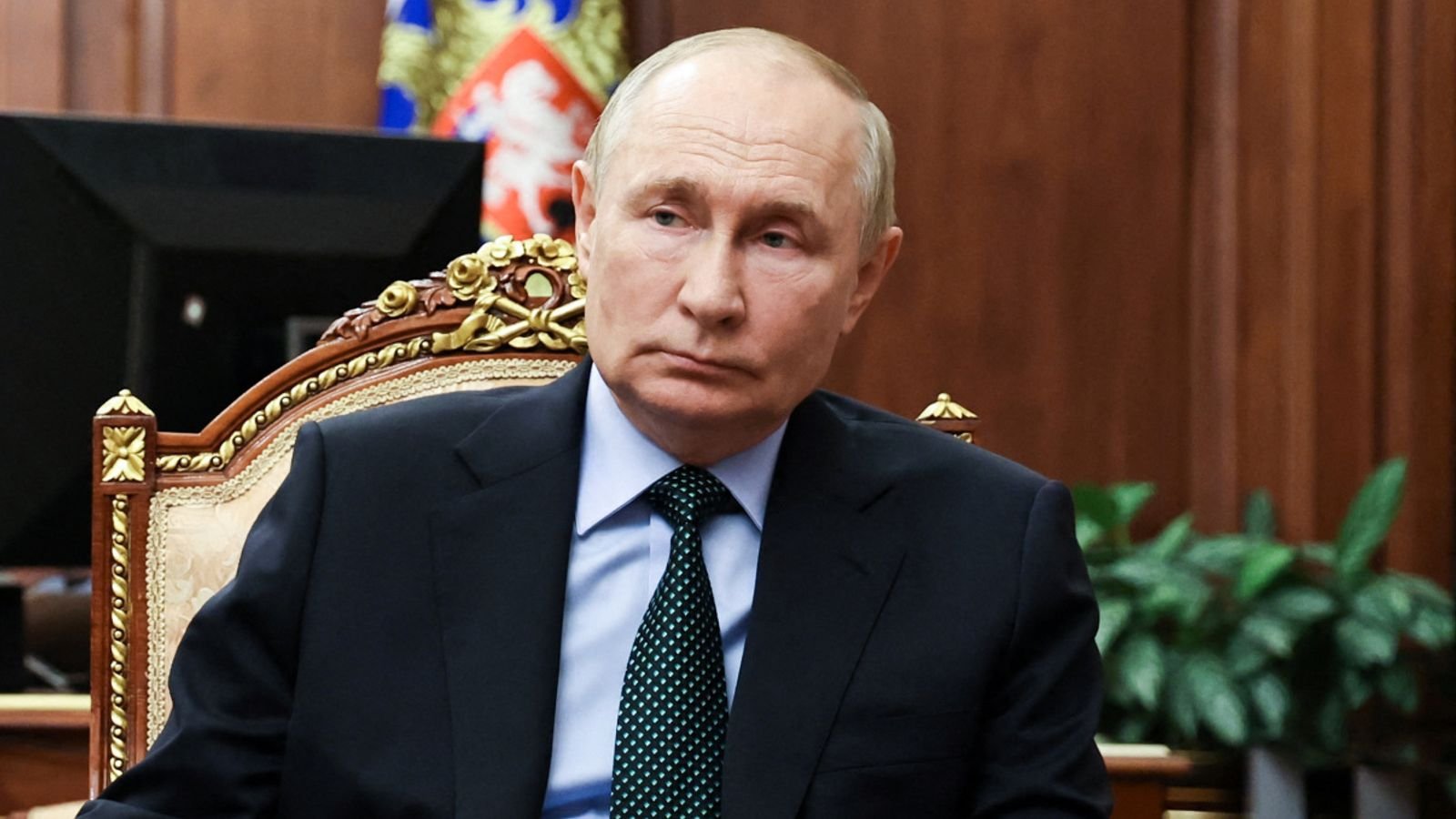The 1,000th day of war in Ukraine was a significant one.
It marked the first time, according to Moscow, that Ukraine used US supplied long-range missiles to fire deep into Russia.
It came just a day after US President Joe Biden authorised the move – something he had been reluctant to do for some time.
Spreaker This content is provided by Spreaker, which may be using cookies and other technologies. To show you this content, we need your permission to use cookies. You can use the buttons below to amend your preferences to enable Spreaker cookies or to allow those cookies just once. You can change your settings at any time via the Privacy Options. Unfortunately we have been unable to verify if you have consented to Spreaker cookies. To view this content you can use the button below to allow Spreaker cookies for this session only.
The stunning shift in policy was a welcome one for Ukraine in its attempt to defend itself against Russian aggression – but it has led to fears that a wider conflict could be bubbling.
Could it?
Vladimir Putin has long warned the West they would be playing with fire if they allowed Ukrainian forces to launch Western-supplied cruise and ballistic missiles at Russia, saying it could trigger a global conflict.
So far, only the US has allowed use of its long-range missiles, but the UK and France have also provided Ukraine with similar weaponry.
Defence analyst Tim Ripley told the Sky News Daily podcast, which you can listen to in full here, it would be “really surprising” if they don’t follow its lead and give the Ukrainian military permission to use them.
Regardless, Mr Putin suggested in September that any use of Western-supplied missiles would mean “the direct involvement of NATO countries, the United States and European countries in the war in Ukraine”.
He called the move “an unacceptable red line” and, if that is true, then NATO has now crossed it.
Has Russia done anything about it?
Hours before reports of Ukraine’s first long-range missile use came in, Mr Putin approved an updated nuclear doctrine, saying that Russia could consider using nuclear weapons if it is subject to a conventional missile assault on it supported by a nuclear power.
The decision to change Russia’s official nuclear doctrine has been in process for months – but signing it this week appears to be Mr Putin’s response to the long-range missile shift.
The updated doctrine, which outlines the threats that would make Russia’s leadership consider a nuclear strike, said an attack with conventional missiles, drones or other aircraft could be considered to meet these criteria.
It also said any aggression against Russia by a state that was a member of a coalition would be considered by Moscow to be aggression against it by the whole coalition – such as NATO.

Russia making threats – but are they genuine?
Mr Ripley suggests lots of the Kremlin’s rhetoric is “performative” and that starting a larger conflict is not in its best interest.
“They have very carefully restricted the war to the boundaries of Ukraine,” he says, allowing them to largely control the conflict.
“So why would they escalate the war? By not escalating the war and not bringing in NATO, they have baked in their supremacy over the Ukrainians.
“If they had to fight NATO at the same time with the Ukrainians, the dynamics would be changed.
“At the moment, they have more men, more tanks, more planes, more missiles, more everything against Ukrainians.
“But if they had to factor in NATO as well, they would be outnumbered. So it’s really not in their interests to expand this war in a way that brings in NATO openly on the side of the Ukrainians.”

Moscow correspondent Ivor Bennett says the general consensus among Western diplomats is that Russia doesn’t want a nuclear war any more than the West does, and that it’s nuclear talk, including the doctrine approved, is “bluffing” and “posturing”.
“No one wants it,” he says, adding the Kremlin has remained “deliberately vague” about what a Russian response might look like to make them sound “more threatening”.
This isn’t the first time a supposed “Russian red line” has been crossed, he adds, noting battle tanks and fighter jets have both been sent to Ukraine by NATO countries and used during this war without “incurring the repercussions that were threatened”.
“This public fury we’ve heard today from the Kremlin won’t worry the West so much, it’s more what they might do out of sight behind the scenes,” Bennett says.
He suggests it could respond in subtler ways, such as sabotage and cyberattacks.
Mr Putin has previously raised the prospect of sending weapons to Western adversaries, potentially referring to Iran or its proxies.
Read more on Sky News:
Is Putin ready to reach for red button?
Why UK missiles would only have marginal effect
Missiles may not pull NATO in – but what would?
The biggest red line for the Russians, Mr Ripley says, would be NATO countries sending troops to Ukraine.
He points to recent talk of UK troops going to Ukraine for training missions, adviser missions and logistics support missions with Ukrainian troops.
“If this were the case and a contingent of British soldiers goes into Ukraine to train the Ukrainian army, the Russians will try to find them and attack them,” he says.
He adds the Russians would “not be worried about doing that” because the UK troops’ presence in Ukraine would be seen as “an overt escalation by NATO”.
“That’s entering their war zone,” he emphasises.
“Also, how would the British public react to British soldiers being killed in Ukraine,” he asks, suggesting the matter would escalate from there.
The UK military has been helping train Ukrainian soldiers since 2022, but they are flown to the UK.
